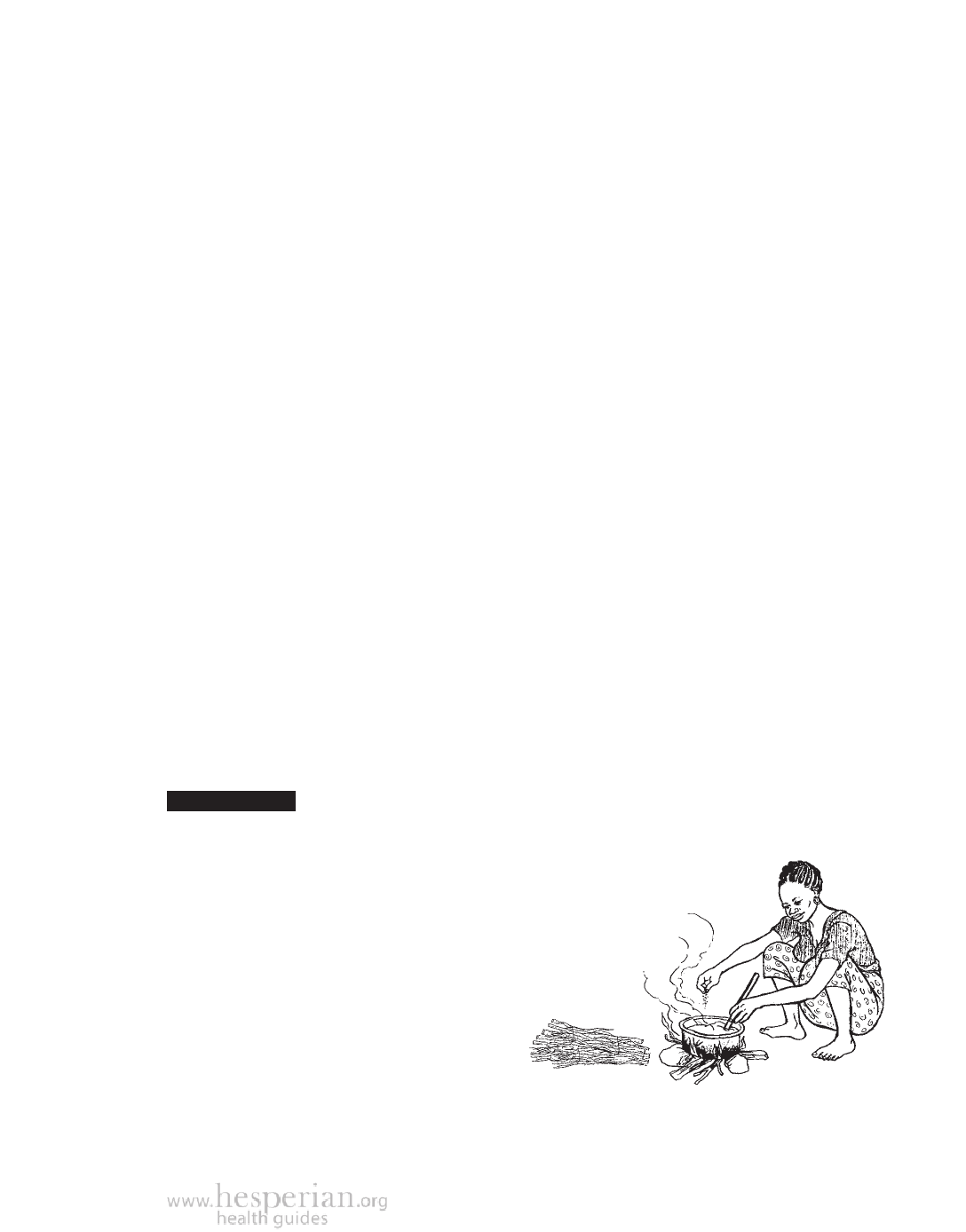
Make Water Safe to drink
97
To use and maintain a slow sand filter
After a few days of use, a layer of green scum (bacteria and algae) will grow
on top of the sand. This helps to treat the water, so do not remove it. For this
scum to work, the sand must always be covered with about 5 cm of water.
(This is why the tap is placed above the sand layer.) Fill the filter daily and
remove water only in small amounts. If the filter is drained completely it will
not work well, and will need to be cleaned and refilled.
Allow solids to settle out of the water before pouring it into the filter.
This will reduce the need to clean the filter because the water will be cleaner
when it enters. Letting water flow like a waterfall as you pour it will add air
into the water and make it taste better.
When the water flow from the tap slows down, clean the filter. Drain all
the water and remove the green layer and about 1 cm of sand from the top.
After many cleanings, when more than half of the sand has been removed,
replace all the sand and gravel with new cleaned sand and gravel and start
over. This may be necessary 1 or 2 times a year.
Arsenic filter
To filter out arsenic from water, add a container filled with iron nails to the
top of a slow sand filter. Use 5 kg of the smallest sized iron nails. Do not use
“galvanized” nails because the nails must be able to rust for the filter to work.
Arsenic binds to the rust on the iron nails and is removed from the drinking
water. If possible, test the water after it has been filtered to be sure that the
filter works in your area. (For more information, see Resources.)
Disinfecting water
Disinfecting water kills germs and worms, making water safe to drink.
The best methods are boiling, solar disinfection, or using chlorine.
Important: These methods will NOT make water safe from toxic chemicals.
Boiling water
Bring water to a rapid, rolling boil. Once it starts boiling, let it
boil for 1 full minute before taking the pot off to cool. In high
mountain areas, water needs to boil for 3 minutes to kill
germs because water boils at a lower temperature high
in the mountains.
Boiling changes the taste of the water. After
boiled water cools, pour it into a bottle and
shake it strongly. The shaking will add
air to the water and improve the taste.
Where firewood is scarce, boiling
water can be difficult. Planning to boil
water after food is prepared but before the
fire dies is one way to reduce your use of wood.
Boiling water for 1 minute
makes it safe from germs.
A Community Guide to Environmental Health 2012